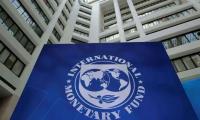I was recently talking to a faculty member, a fellow Gen-Xer, at a major UK university and he shared an observation he made at the start of the new academic year.
This fall he is teaching a first-year course which means it comprises mostly students fresh out of high-school from different countries. As he began pitching them problems to solve, he noticed how the majority of students took out big-screen tablet computers (“iPads”) and styluses and went at it, with the remaining students defaulting to pens and paper notebooks.
Tablet computers have been around for almost two decades and in 2010 Apple, with the release of the iPad, made it a mainstream household item. The release of the Apple pencil a few years later made it into a capable instrument for note taking, doodling and many other uses. If you are an urban middle class Gen-Xer in Pakistan, you are probably quite capable of using a device like that and probably have one at home.
For many of our generation this and other technological tools like it are a curiosity, interesting to try and make for conversation pieces but we are not comfortable using them for everything they are capable of in the way they are advertised. When it is time to do serious work, serious thinking, my age group still finds comfort in the use of pen and paper, like some students in that class still seem to do.
The names, labels, and cutoff points for these generational cohorts (Gen-X, Millennials, Gen-Z, Gen-Alpha) come from researchers and pop media. Significant effort goes into understanding the characteristics of each generational cohort, to the extent that is possible for an entire generation – their norms, values, priorities, shared cultural and historical experiences, formative events, etc. That understanding is key to how governments and businesses modulate their messages and campaigns to reach the next generation of citizens and consumers.
The bulk of this research is conducted in the West and primarily focuses on local populations. That means the cutoff points for generational cohorts are often in terms of trends and events that have little parallel in or relevance to most Pakistanis’ existence. Since there is no comparable research of note happening in Pakistan it is no wonder that many commentators here at home (myself included) that talk about ‘our’ Gen-Z often do so in borrowed terms and descriptions. True, there is a small segment of our population – the urban upper-middle class – that is reasonably well educated, fluent in English, better traveled than most, connected to contemporary global pop culture and trends for whom those generational descriptions somewhat hold. However, for the vast majority that is simply not the case.
The students I talked about in the opening anecdote belong to Gen-Z and are the children of Gen-X. That is the generation that has not known a world where there was no ‘war on terror’. The shared experience of growing up in Pakistan which was on the receiving end of the global war on terror was very different from those living in countries that were doling it out. In the West, the financial crisis of 2008 that left many families homeless and jobless in its wake and the long recession that followed shaped an entire generation’s attitude towards money, work, life, investment, and home-buying. Pakistan’s relatively isolated economy meant that the global recession passed it by leaving it largely unscathed.
A report by the Annie E Casey Foundation out of Baltimore, MD, describes Gen-Z as more diverse than preceding generations, digital natives born into a world of technology, pragmatic and financially minded, facing mental health challenges borne of loneliness from online lives, shrewd consumers and politically progressive. How many of these labels and characteristics apply to young people in Pakistan today? That the West’s Gen-Z is very different from (most of) Pakistan’s should not catch anyone by surprise.
What should be of greater concern is the widening intra-generational gap between circumstances and experiences of members of the same generation of young people living in the same country at the same time.
As this year’s floods have demonstrated, in the coming years we can expect to see more traumatic events due to the global mega-trend of climate change. The cost of rescue and relief operations and rebuilding wiped out infrastructure will consume more resources. For reference, we have still not rebuilt the losses from the TTP attacks on schools in former Fata, the 2010 floods or the 2005 earthquake. According to Unicef, in the aftermath of this year’s floods, more than three million children are at increased risk of hunger, malnutrition, and water borne diseases. Pakistan is already classified as an acutely malnourished country with over 40 per cent stunted children.
In 2005, Hurricane Katrina displaced 200,000 residents of New Orleans. A recent HBO documentary (‘Katrina Babies’), which follows up with people that experienced it as children and how the traumas of losing their homes, losing family members, displacement and the dehumanizing experience of recovery, the same things that flood affectees in Pakistan are experiencing now, has affected them almost two decades later. Even the unborn are affected by natural disasters. A study conducted in 2012 on the effects of Hurricane Sandy showed the impact of stress during pregnancy on children’s development later in life. The results of the study were published in the Journal of Child Psychology and Psychiatry and found that it increased the risk of “depression, anxiety and attention deficit and disruptive behavior disorders.”
Psychological costs and fallout from (ever more frequent climate) disasters remain unacknowledged in Pakistan.
While the cohort of successive generational cohorts in the West is on a steady decline, each of our generation continues to grow bigger than the previous one. Much of that growth is happening in the lowest income households, which are growing urban slums. There is no Gen-Z / Gen-Alpha descriptor that captures this. If there is a youth dividend to be had, as politicians harp on about to cover for their own failures to deliver, it will not be paid out by slum populations. Their best idea is to shovel the poorest into the furnace of the unskilled labor market overseas – be out of sight and just send back forex. That is more like human trafficking than it is economic development.
Developed economies are being challenged by labour shortages and are having to deal with inflation stemming in part from historically low unemployment rates. In contrast, in Pakistan youth unemployment has been soaring for years and has become a major stressor preventing young people from starting their adult lives.
Very recently, the government of Japan approached the HEC about filling 800,000 technology jobs until 2030. They named only two Pakistani universities whose graduates qualify because for decade after decade the state has failed to ensure an adequate standard of education, whether it is delivered by public or private institutions at any level. Despite computer science and technology programmes in every college and institute, there were almost no other qualified takers. The Japanese said they had to spend 1,800 dollars and a full year on training graduates from most Pakistani universities before they can start working. This is the state of affairs on the side of graduates that have university degrees.
On the diploma and vocational certification side, on a different occasion, a Japanese delegation said they were willing to train unskilled labour to work in their country if only we could ensure selected candidates learn two things: A) know civilized bathroom etiquettes; and B) know how to behave themselves around women. True story!
The PTI’s and now the PDM’s grand idea is to put lipstick on public school textbooks, call it the Single National Curriculum (now the ‘National Curriculum of Pakistan’), force it on everyone and claim it would bring “uniformity of thought” (whatever that means) and reduce social disparities. Real opportunities and upward mobility only come from bridging the gap in economic opportunities between segments of society, but that is harder to accomplish.
It is easier to fulfill the Pakistani fetish with uniformity by calling for the standardization of education, irrespective of how ill-advised and impractical that is in a multi-ethnic, multi-lingual federation. It gives the government of the time a slogan and serves the interests of its public champions as a vehicle to prove their political loyalty; it serves everyone’s purpose except that of the children it is purportedly for.
If there is ever an attempt at developing a portrait of our indigenous Gen-Z, the majority of young people, I cannot see it having much in common with that of our urban upper-middle class or that of the rest of the world, and the differences only seem to be growing.
The writer (she/her) has a PhD in Education.
Representational image. — APP FileOnce again there is debate surrounding the National Finance Commission Award,...
Pakistani human rights activist and Supreme Court lawyer Asma Jahangir died on February 11, 2018. — AFPAn annual...
Representational image. — APP FileThe meltdown of Pakistan’s economy needs immediate attention. Political unrest...
A health worker administers polio vaccine drops to a child during a door-to-door polio vaccination campaign in Lahore,...
Armed militants of the banned Tehreek-e-Taliban Pakistan pose for a photograph in Orakzai Agency. —...
An aeroplane of the national flag carrier of Pakistan is seen in this file photo. — AFPWhile Pakistan considers...







